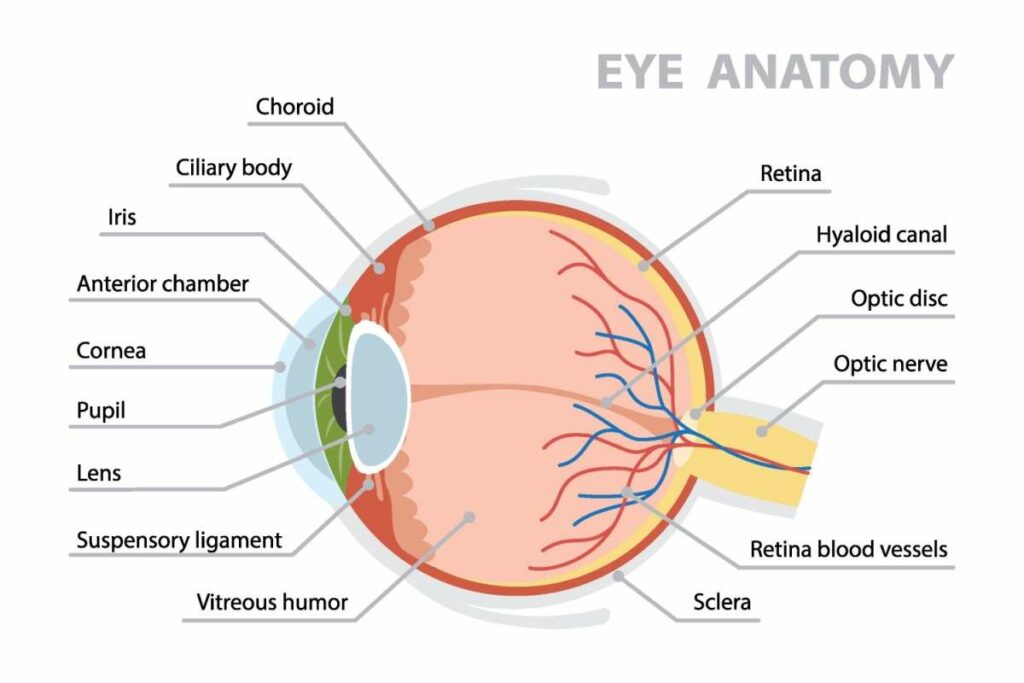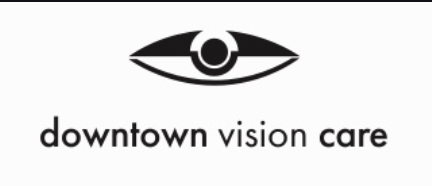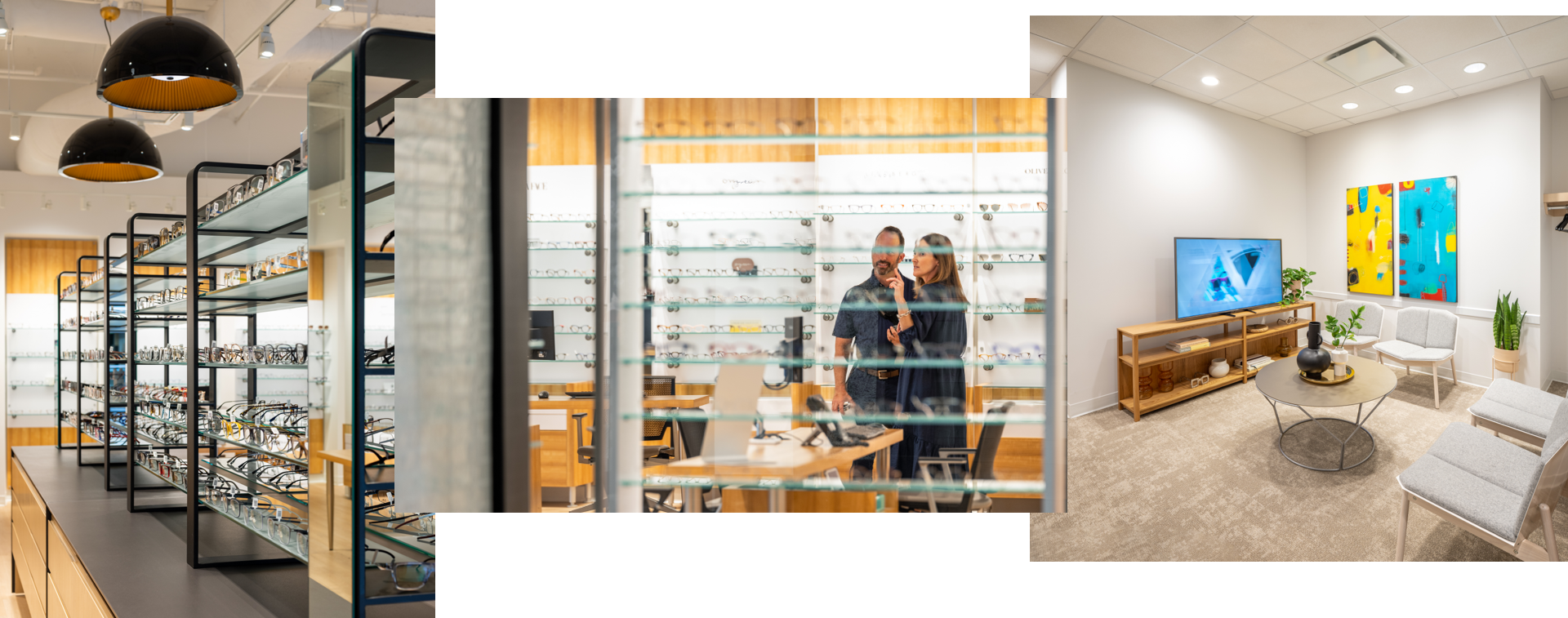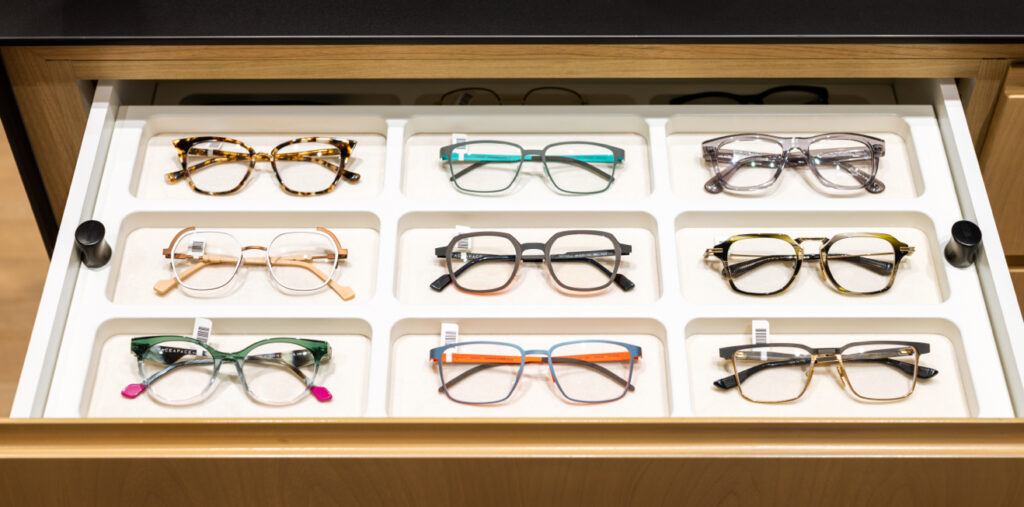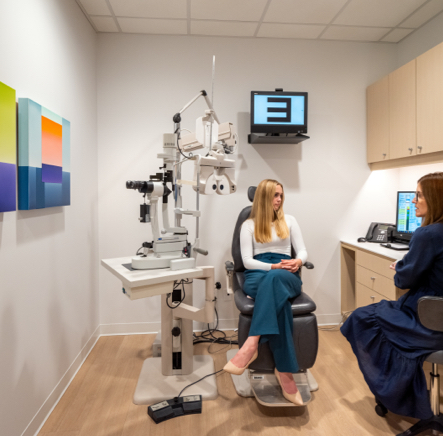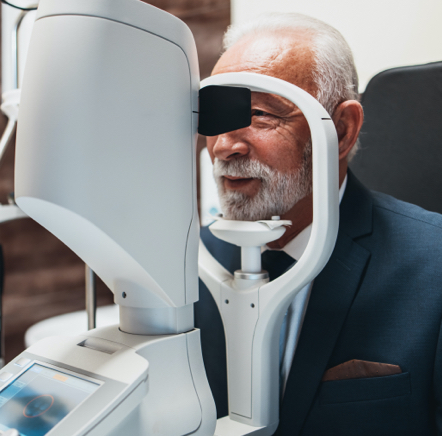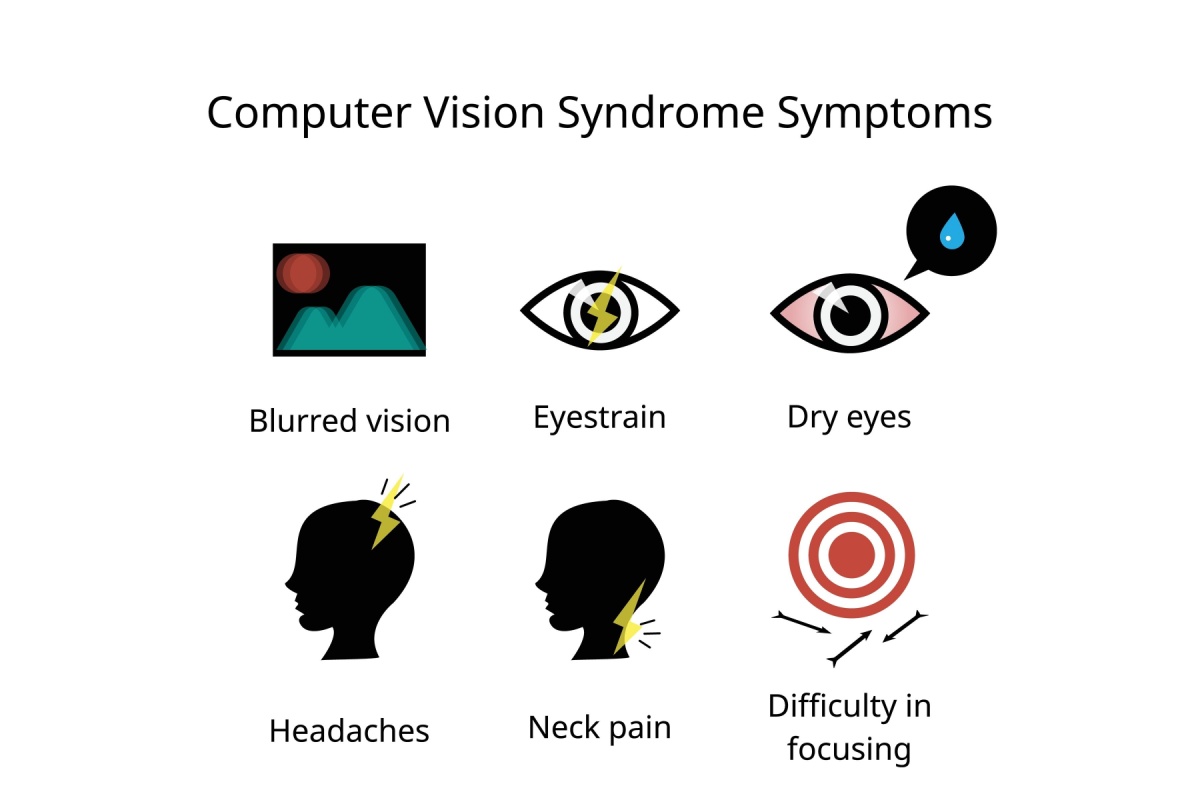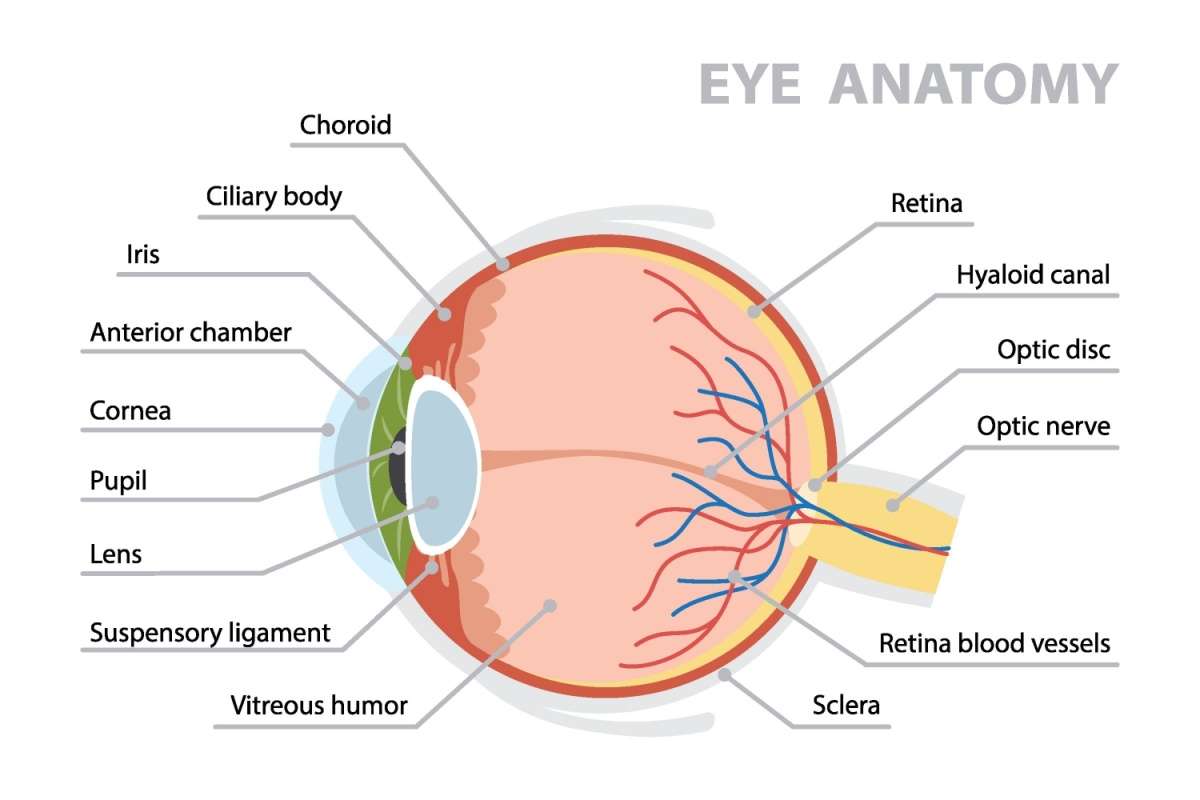Your vision can change gradually, often so subtly that you do not notice anything at first. This is especially true when long hours on screens are part of your daily routine. Regular eye care helps you stay ahead of those changes so they do not begin to affect your work or everyday activities.
Regular eye exams are essential because they detect vision changes and eye health issues early, often before symptoms appear. Comprehensive exams check more than your prescription. They monitor the overall health of your eyes and help protect your long-term vision.
What Happens During Your Eye Exam
Comprehensive Vision Testing
Your eye doctor measures how clearly you see at different distances using specialized charts and equipment. These tests determine if your prescription has changed since your last visit. The examination also evaluates how well your eyes work together and focus on objects at various distances.
Eye Health Evaluation
The optometrist examines the inside of your eyes using bright lights and magnifying lenses. This process reveals the condition of your retina, blood vessels, and optic nerve. Small changes in these structures can indicate developing problems such as diabetes complications or glaucoma.
Pressure & Function Tests
Eye pressure measurements help detect glaucoma before it damages your vision. The doctor also tests your peripheral vision to ensure you can see properly to the sides while looking straight ahead. These functional tests reveal problems that standard vision charts cannot detect.
Regular comprehensive eye exams provide health monitoring that extends beyond basic vision correction.
Early Detection Prevents Vision Loss
Silent Vision Threats You Cannot Feel
Not all eye problems are noticeable right away. Some conditions progress quietly because they do not cause pain or sudden vision changes. That is why relying only on symptoms can delay treatment until damage has already occurred.
Conditions that often develop without early warning include:
- Glaucoma, which can damage peripheral vision without noticeable symptoms
- Diabetic retinopathy, where changes to retinal blood vessels happen gradually
- Age-related macular degeneration, which affects central vision over time
- Elevated eye pressure, which increases your risk for future vision problems
These conditions are often easiest to manage when detected early through a comprehensive eye exam, even when your vision still feels normal.
Why Waiting for Symptoms Costs You
By the time you notice changes in your vision, damage may already be more advanced. Glaucoma, for example, can affect peripheral vision long before symptoms are noticeable. Diabetic eye disease can progress quietly until swelling or bleeding impacts central vision.
Early detection gives you the best chance to protect your sight. While lost vision cannot usually be restored, timely treatment can help slow or prevent further damage. That is why regular eye exams are so valuable, even when your eyes feel perfectly normal.
Modern diagnostic technology allows eye doctors to examine internal eye structures in detail, helping detect concerns long before you notice any changes.
How Often You Need Professional Eye Care
Most adults benefit from a comprehensive eye exam every year. Regular annual visits allow your eye doctor to track subtle changes in your vision and overall eye health, making it easier to address concerns early.
Certain factors may require more frequent monitoring, including:
- A family history of eye disease
- Diabetes or high blood pressure
- Previous eye injuries or surgeries
- Significant daily screen use
- Cataracts
- Glaucoma
If any of these apply to you, your optometrist may recommend a customized exam schedule to keep your eyes healthy and your vision comfortable throughout the workday.
Digital eye strain continues to rise among professionals who rely on screens for long hours, making consistent care more important than ever.

Technology Reveals Hidden Problems
Digital Retinal Imaging
High-resolution cameras capture detailed photographs of the back of your eyes. These images help your doctor spot small changes that might indicate developing problems. Comparing photos from different visits reveals progression that would be impossible to detect otherwise.
Optical Coherence Tomography
This scan creates cross-sectional images of your retinal layers, similar to an ultrasound for your eyes. The technology detects swelling, thinning, or other structural changes that occur in macular degeneration and diabetic eye disease. These detailed measurements track changes as small as a few micrometers.
Visual Field Testing
Computerized tests map your complete field of vision, including areas you might not notice during daily activities. The test reveals blind spots caused by glaucoma, stroke, or brain tumors. Regular field testing tracks whether treatments are working effectively.
OCT testing provides detailed analysis of retinal structures that cannot be seen during standard examinations.
Dry Eye Therapy & Contact Lens Services
Comprehensive Dry Eye Assessment
Your tears do more than keep your eyes moist — they protect against infection and maintain clear vision. Dry eye evaluations measure tear production, quality, and how quickly tears evaporate. Based on these findings, your eye doctor creates a treatment plan that might include special drops, medications, or in-office procedures.
Professional Contact Lens Fitting
Contact lenses must match your eye’s exact shape and size for comfortable, safe wear. Professional fitting includes precise measurements of your corneal curvature and eye surface. The doctor also evaluates your tear film to ensure it can support healthy contact lens wear.
Ongoing Monitoring for Contact Wearers
Regular check-ups prevent serious complications such as infections or corneal damage. Your doctor examines how the lenses interact with your eyes and adjusts the fit if needed. These visits also ensure your prescription remains accurate and your eyes stay healthy.
Dry eye therapy addresses the underlying causes of tear film instability that affects many professionals. Professional contact lens fitting ensures optimal comfort and vision correction.
Proper contact lens care prevents serious complications that can threaten your vision and eye health.
Protect Your Vision With Professional Eye Care
Your eyes work hard every day, especially if your job involves long hours on digital devices or detailed visual tasks. Regular eye exams help ensure that your vision stays clear, comfortable, and dependable.
At Downtown Vision Care, you will find comprehensive eye examinations, advanced diagnostic technology, dry eye solutions, and customized contact lens services, all designed to support your visual needs at work and beyond.
Book your next eye exam and keep your vision performing at its best.


